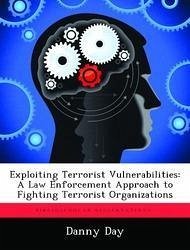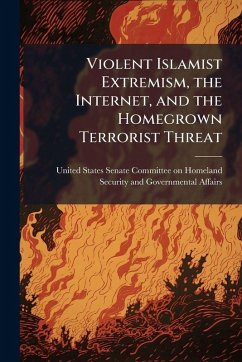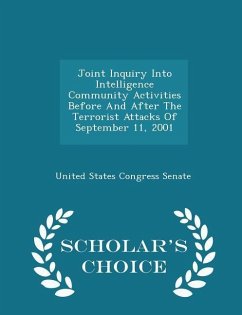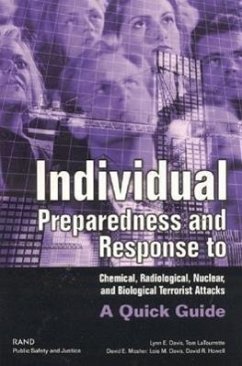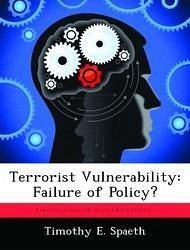
Terrorist Vulnerability
Failure of Policy?
Versandkostenfrei!
Versandfertig in über 4 Wochen
14,99 €
inkl. MwSt.

PAYBACK Punkte
7 °P sammeln!
The deployment of US armed forces to areas of unrest exposes them to possible attack from hostile state and non-state actors. US forces represent American interests and provide an opportunity for an adversary to attempt to influence US public or political opinion through violence or threat of violence. For the purposes of this paper, the focus will be on the threat of terrorist bomb attacks against US forces abroad. When it comes to protecting deployed United States military forces against terrorism, is force protection provided sufficient priority under current US security policies and guidan...
The deployment of US armed forces to areas of unrest exposes them to possible attack from hostile state and non-state actors. US forces represent American interests and provide an opportunity for an adversary to attempt to influence US public or political opinion through violence or threat of violence. For the purposes of this paper, the focus will be on the threat of terrorist bomb attacks against US forces abroad. When it comes to protecting deployed United States military forces against terrorism, is force protection provided sufficient priority under current US security policies and guidance? Traditional research methods were used to analyze and provide possible solutions to the problem. US government publications, military manuals, and professional journals provided the primary information sources to avoid possible periodical and newspaper bias. Also, the suicide bombing of the US Marine barracks in Lebanon in 1983 and the Khobar Towers bombing in 1996 are used as case studies to illustrate the similarities and differences of the findings, recommendations, and force protection guidance resulting from each of two mass-casualty bombings, 13 years apart. There are similarities between the two bombings, but while there is certainly more guidance and written policy concerning the terrorist threat to US forces since 1983, there does not appear to be a truly united effort among the armed forces to protect themselves against terrorist attack. This requires the creation of a true joint doctrine leading to better training, education, and resources to protect deployed US forces and deter terrorism. This work has been selected by scholars as being culturally important, and is part of the knowledge base of civilization as we know it. This work was reproduced from the original artifact, and remains as true to the original work as possible. Therefore, you will see the original copyright references, library stamps (as most of these works have been housed in our most important libraries around the world), and other notations in the work. This work is in the public domain in the United States of America, and possibly other nations. Within the United States, you may freely copy and distribute this work, as no entity (individual or corporate) has a copyright on the body of the work. As a reproduction of a historical artifact, this work may contain missing or blurred pages, poor pictures, errant marks, etc. Scholars believe, and we concur, that this work is important enough to be preserved, reproduced, and made generally available to the public. We appreciate your support of the preservation process, and thank you for being an important part of keeping this knowledge alive and relevant.




